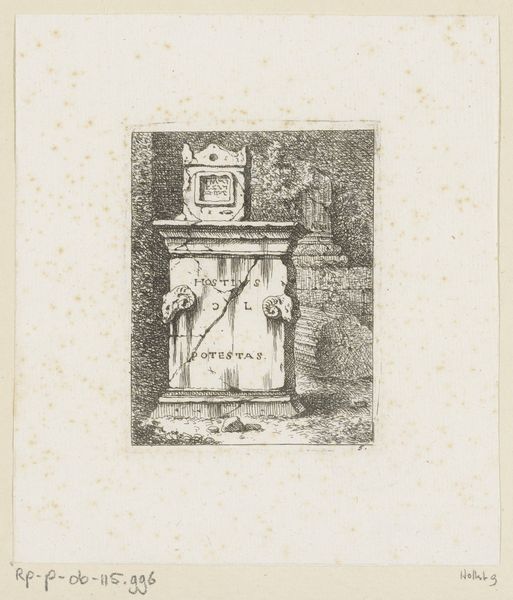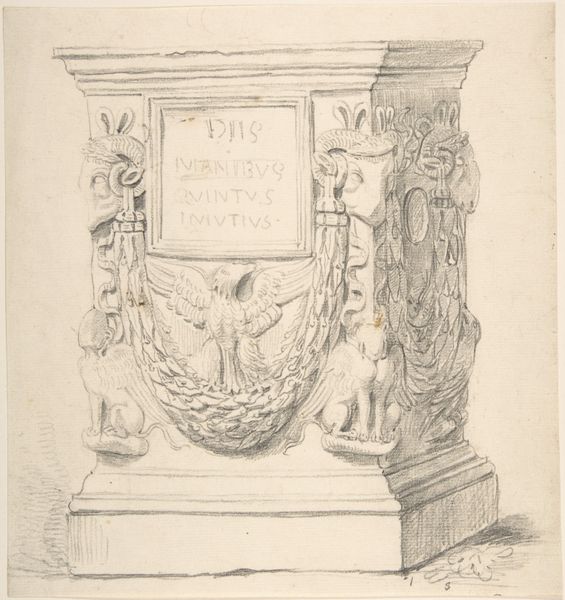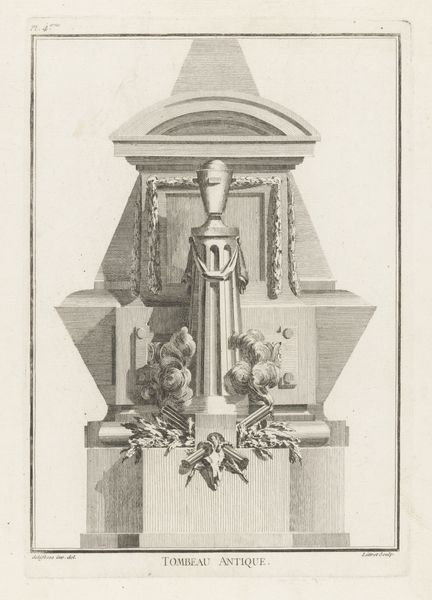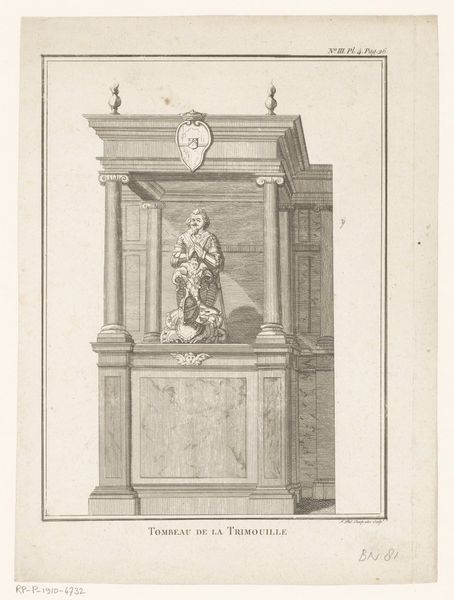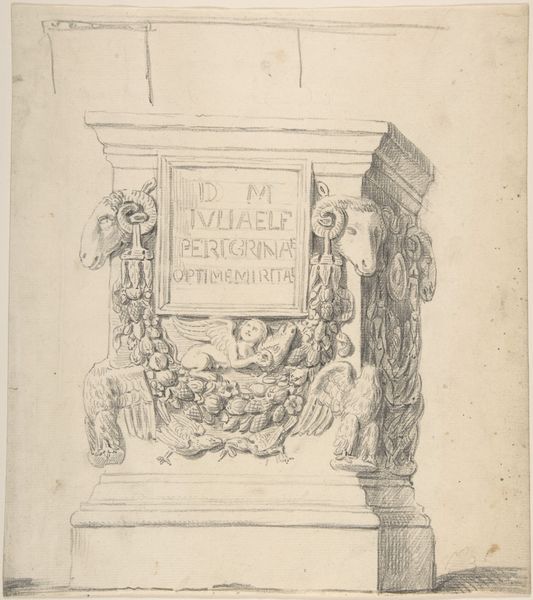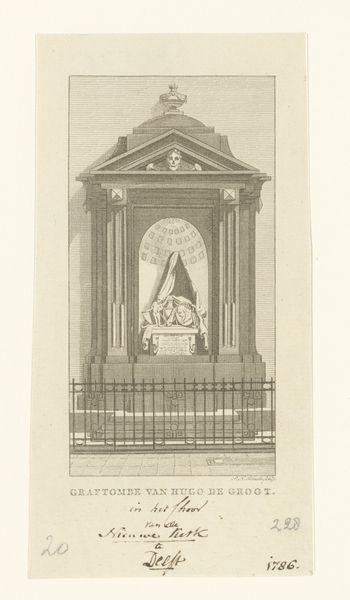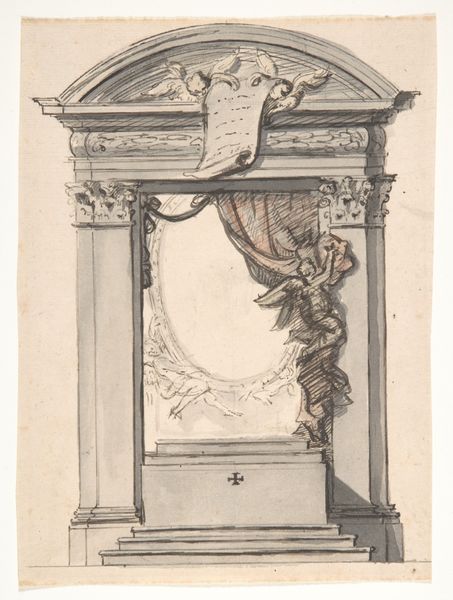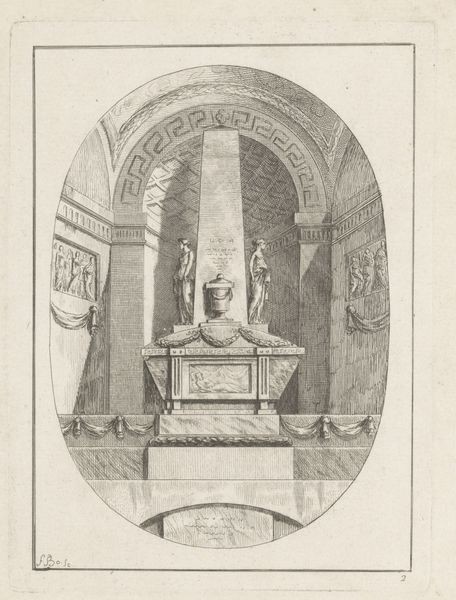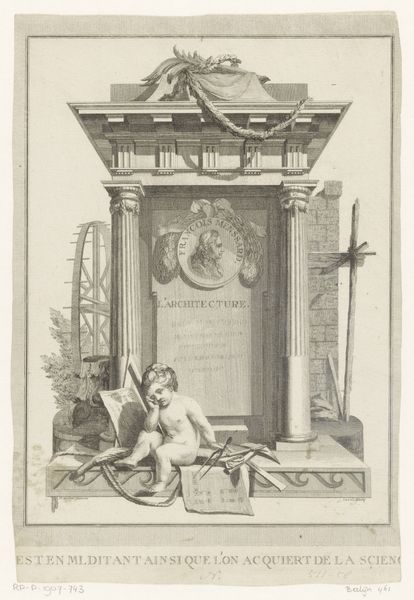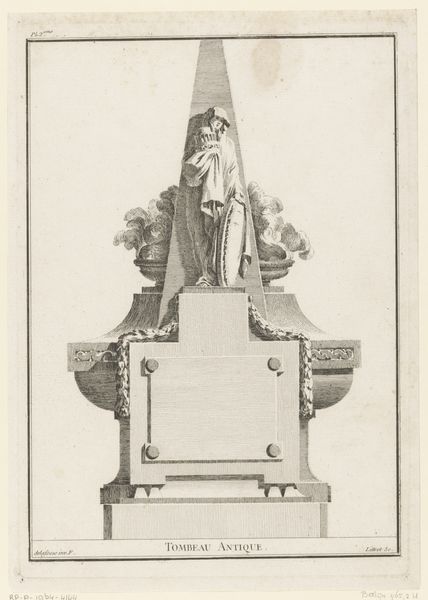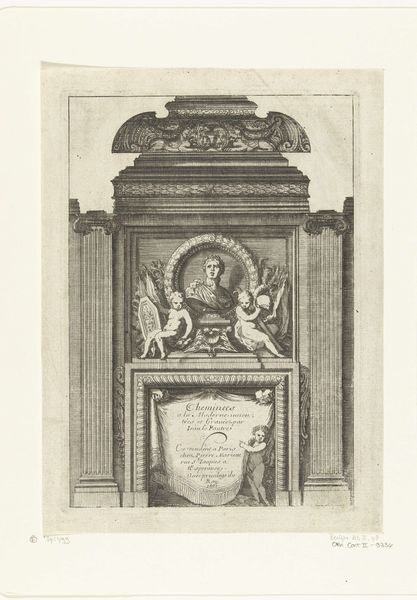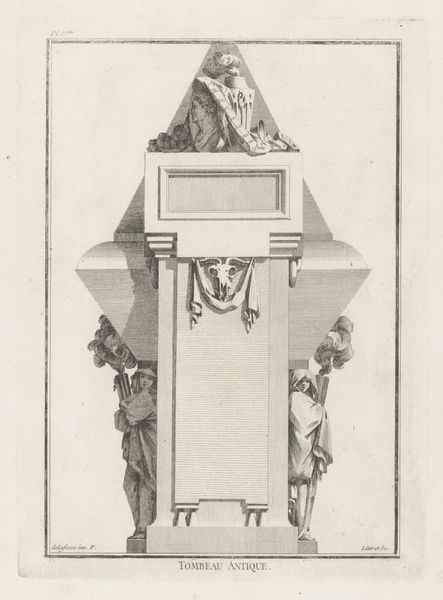
drawing, print, ink, engraving
#
drawing
#
aged paper
#
quirky sketch
#
baroque
# print
#
old engraving style
#
sketch book
#
landscape
#
figuration
#
personal sketchbook
#
ink
#
sketchwork
#
ancient-mediterranean
#
pen-ink sketch
#
sketchbook drawing
#
storyboard and sketchbook work
#
sketchbook art
#
engraving
Dimensions: height 81 mm, width 62 mm
Copyright: Rijks Museum: Open Domain
Curator: Here we have "Altar with Two Ram's Heads" by Johann Franz Ermels, the Elder, likely created sometime between 1651 and 1693. It's an engraving, drawn in ink, that evokes an intriguing sense of classical ruin. Editor: It hits you with a quiet sort of melancholy, doesn't it? Like finding an abandoned stage set after the final performance, all faded grandeur. Curator: Absolutely. The altar itself, or what remains of it, is adorned with these very prominent ram’s heads. Rams in art and mythology are so loaded—they represent virility, sacrifice, even stubbornness. Their presence here on what’s clearly an altar… Editor: Makes you wonder what rituals happened here. Was it some rustic god being honored? Or some shadowy blood rite? It’s the fragmented Latin inscription that really fuels the imagination: "Hostius…Potestas…" "Host, Power" – fragments whispering of forgotten ceremonies. Curator: Precisely. And that sense of fragmentation extends beyond the text. Notice the cracked stone, the way the architectural elements in the background are dissolving into a rough, almost primal, landscape. Editor: It gives the whole piece this wonderfully unsettling quality. It feels both ancient and strangely modern. Almost like a post-apocalyptic vision in an old master’s hand. The rough line work enhances that, too, making it seem both detailed and hastily sketched at the same time. As if the artist was recording a fading memory. Curator: Well, it's worth noting the Baroque influence on the depiction. This style often portrays drama and movement, seen in the swirling linework around the altar. But that "primal landscape", as you say, balances with a grounding influence of Ancient art movements. It emphasizes human constructs yielding to natural forces. It serves to reflect not just artistic values, but larger cultural attitudes around power and religion. Editor: I hadn’t thought about it like that. It's fascinating how all of those meanings simmer beneath the surface, just hinted at, like shadows in the stonework. It becomes this layered experience. Curator: Exactly! It's not just about the technique or the historical context but about the questions it leaves lingering in your mind. Editor: Right. It is an evocative piece with something to say to you. A puzzle built in shadow and symbolism, I suppose.
Comments
No comments
Be the first to comment and join the conversation on the ultimate creative platform.
